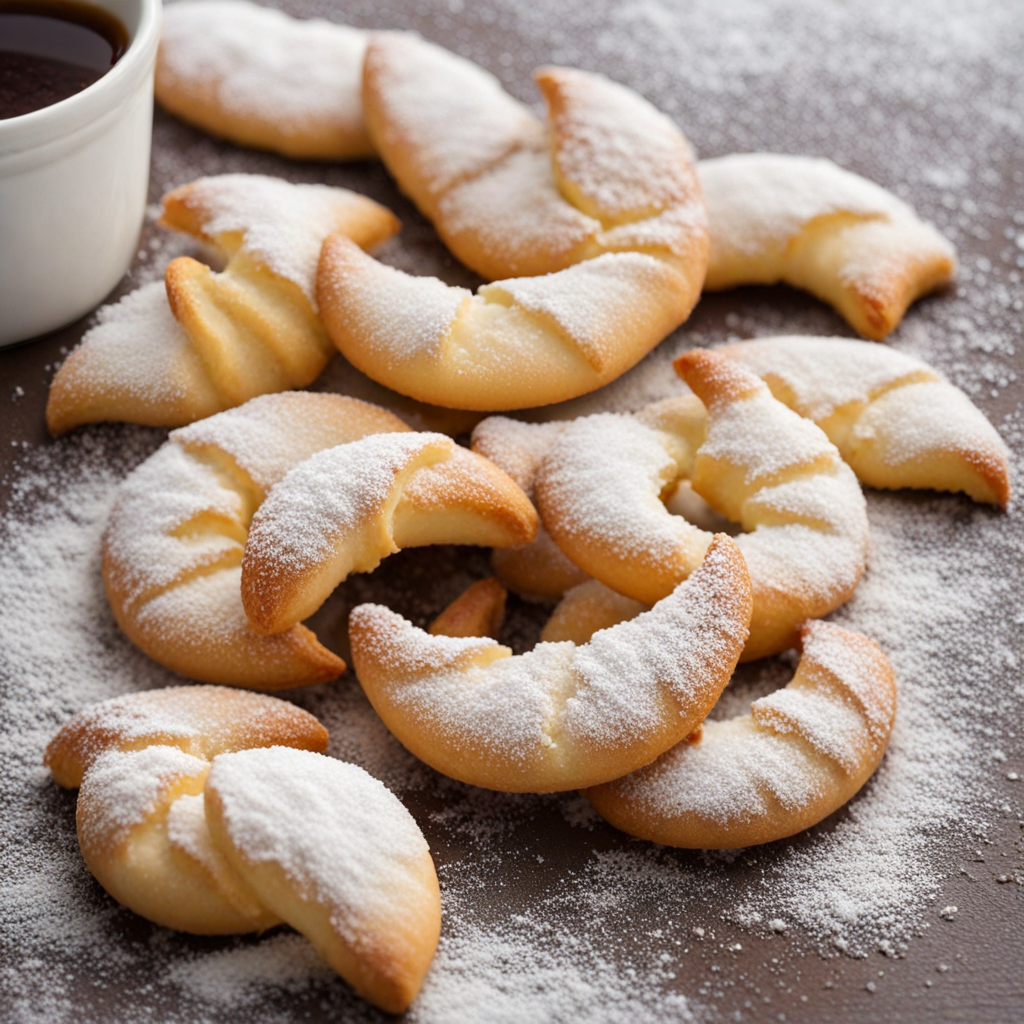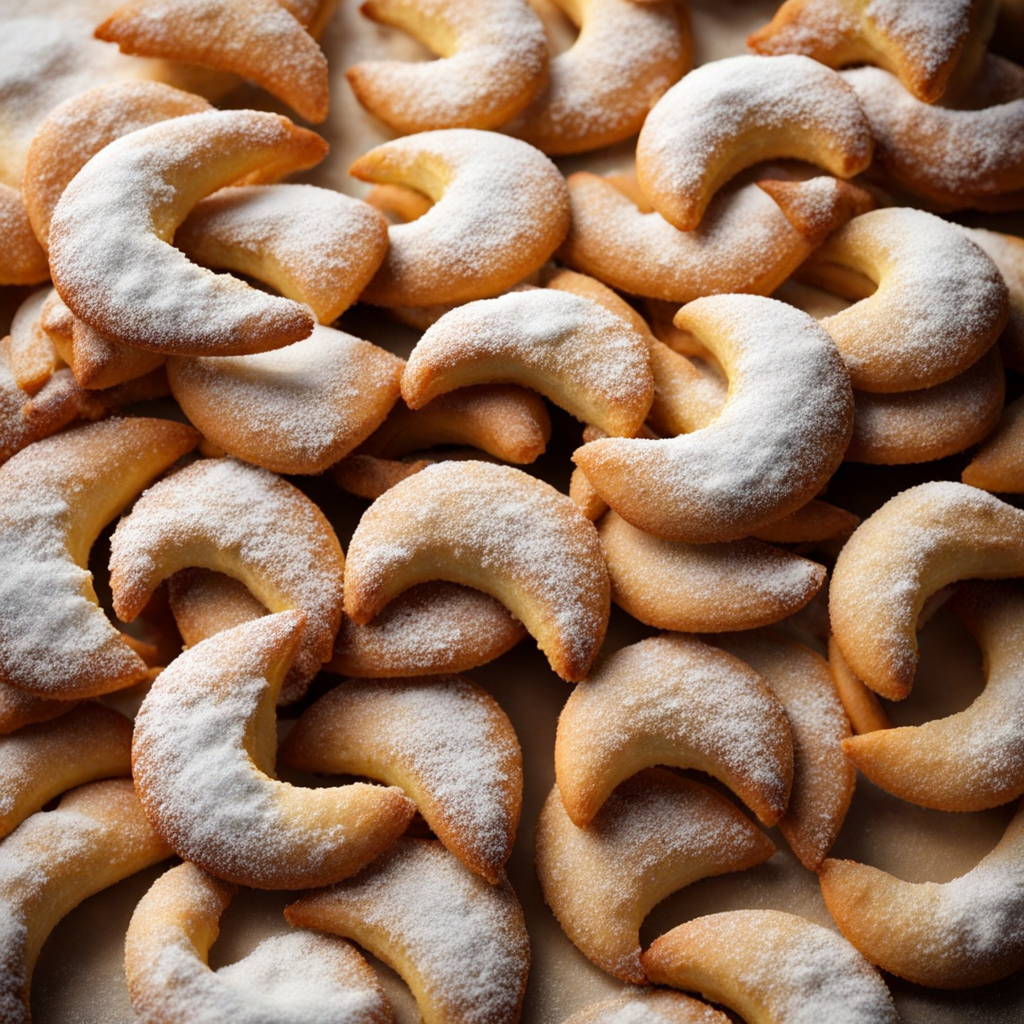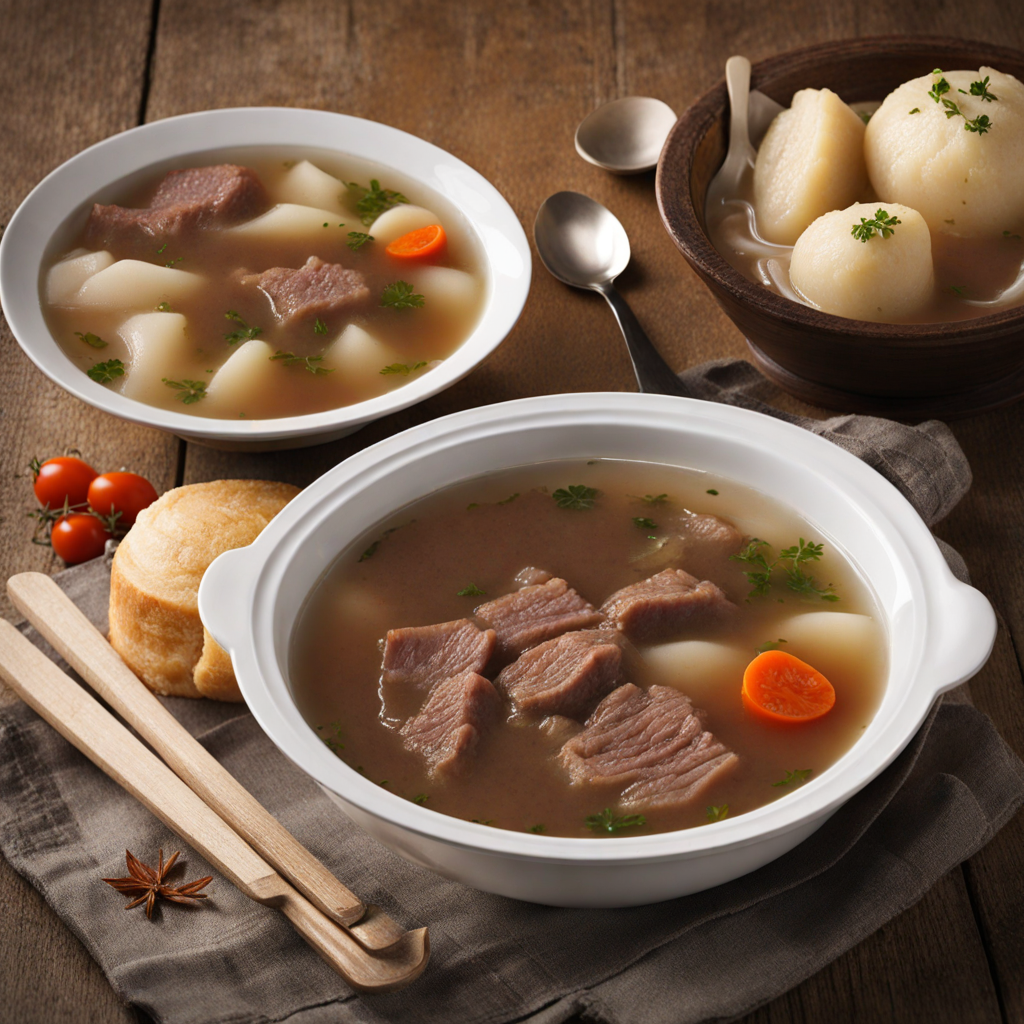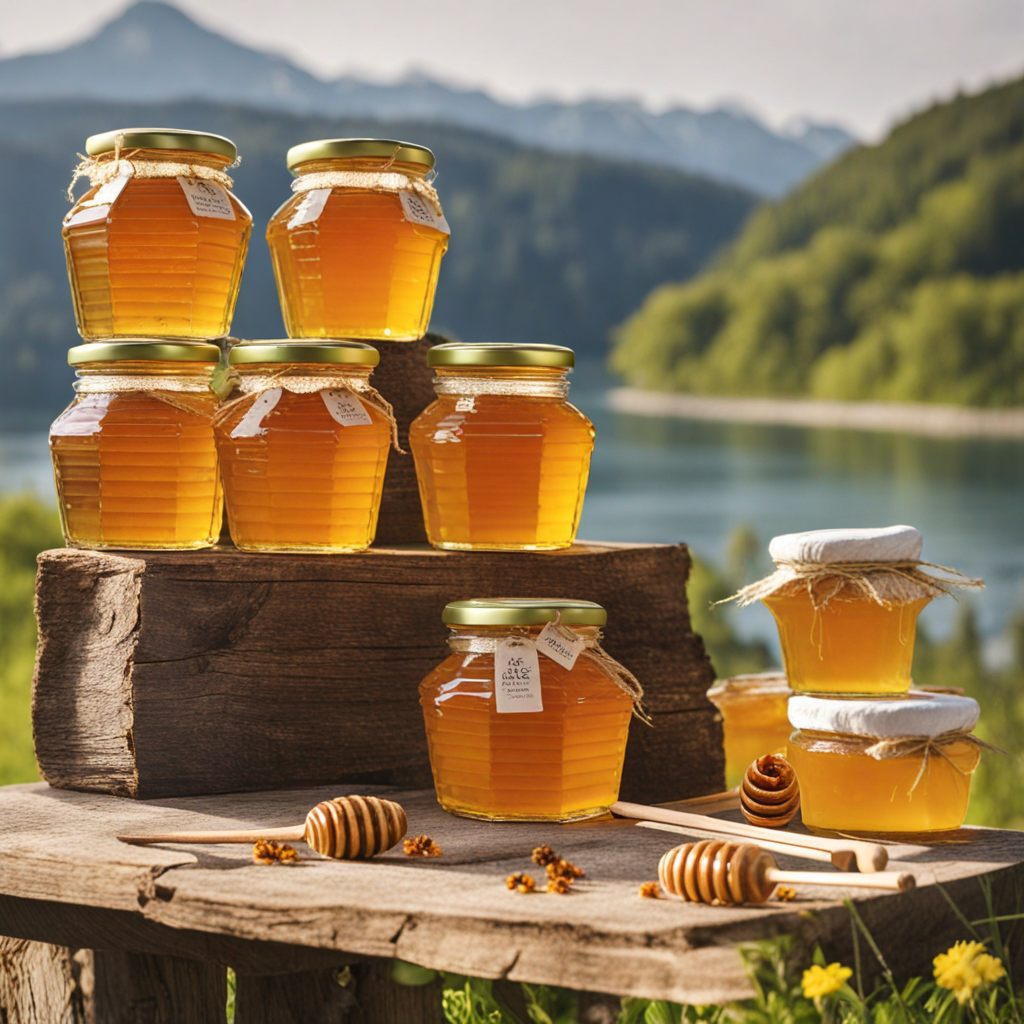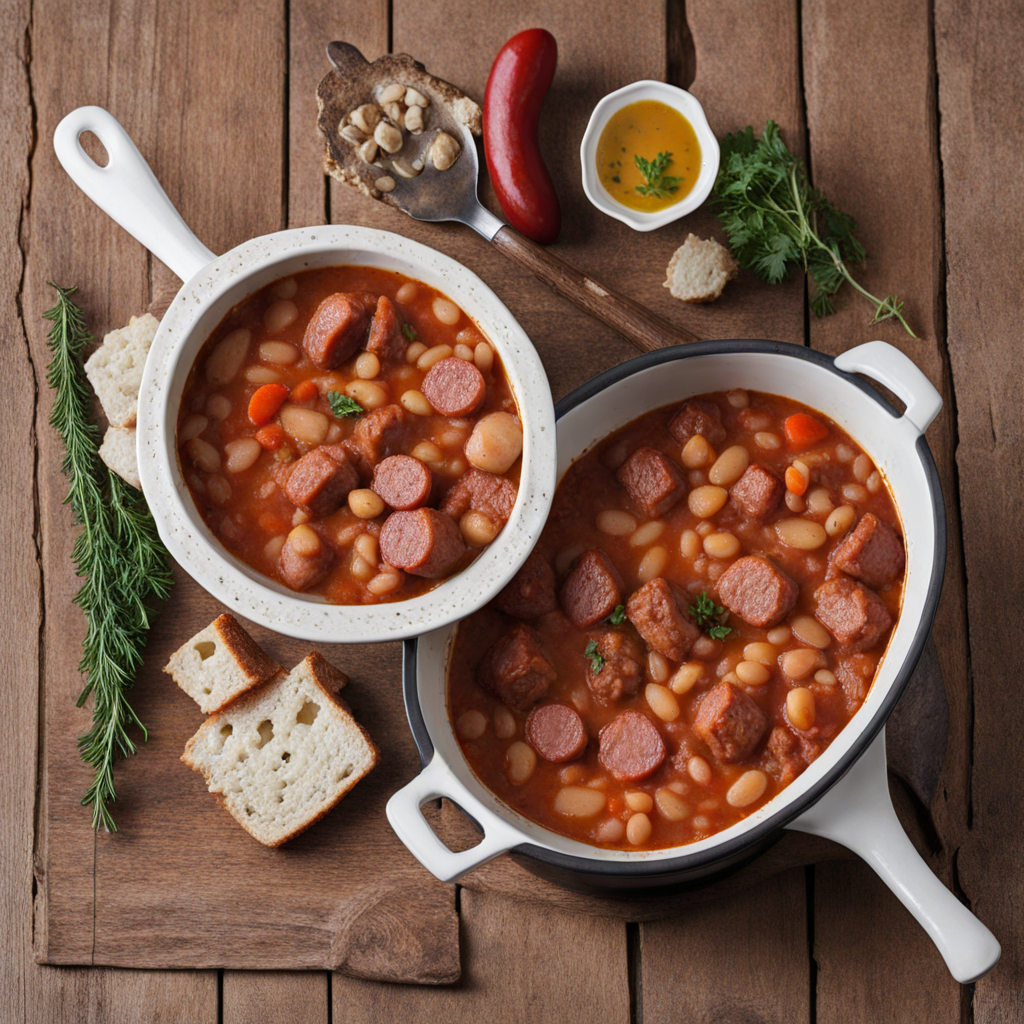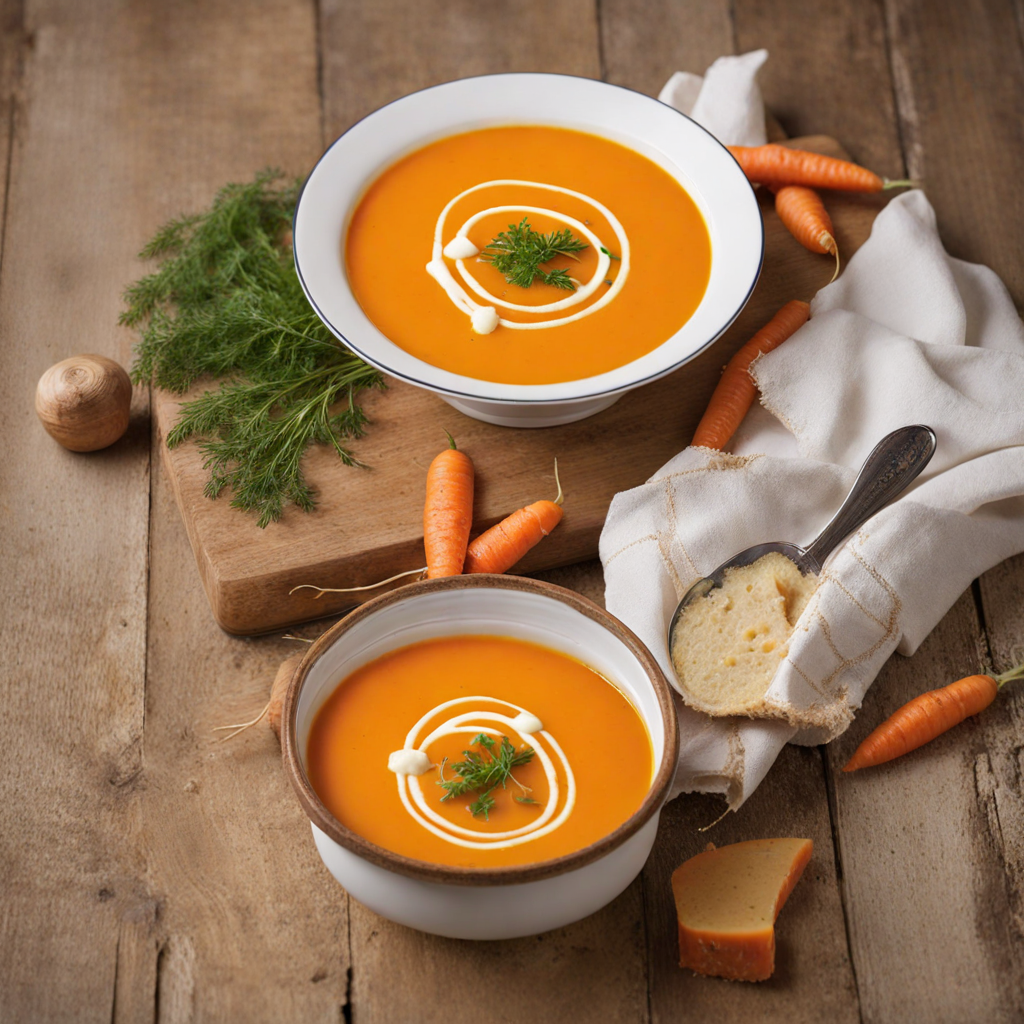Slovenian Vanilla Crescents
Slovenian Vanilla Crescents, known as 'Vanilijevi Kiflji', are a delightful treat that embodies the rich culinary traditions of Slovenia. These delicate cookies are made with a buttery dough that melts in your mouth, combining the flavors of finely ground nuts, usually walnuts or almonds, with a hint of vanilla. The dough is rolled into crescent shapes and baked to a golden perfection, creating a beautiful contrast between the crispy exterior and the tender, crumbly interior. Each bite offers a luxurious experience, complemented by the enchanting aroma of freshly baked goods that fills the kitchen during the baking process. What sets these crescents apart is their final touch: a generous dusting of powdered sugar mixed with vanilla sugar, which not only adds sweetness but also enhances the fragrant vanilla notes. This finishing touch gives the cookies an elegant appearance, making them a popular choice for festive occasions and family gatherings. They are often enjoyed with a cup of tea or coffee, where their rich flavors can truly shine. The combination of textures and flavors makes them a delightful contrast to the usual cookie fare, capturing the essence of Slovenian baking tradition. These cookies are not just a treat for the palate but also evoke a sense of nostalgia and warmth, often associated with family recipes passed down through generations. Making Slovenian Vanilla Crescents can be a cherished activity, bringing families together in the kitchen to share stories and create memories. With their simple yet rich flavor profile and delicate form, these crescents are a must-try for anyone looking to explore new and delightful tastes from Slovenia.
How It Became This Dish
The History of Vanilijevi Rogljički: Slovenia’s Sweet Symbol #### Origins and Ingredients Vanilijevi rogljički, or vanilla crescents, are a beloved Slovenian pastry that embodies the rich tapestry of Central European culinary traditions. Their origins can be traced back to the Austro-Hungarian Empire, a time when Slovenia was influenced by the myriad cultural currents flowing through the region. The name itself hints at the Austrian roots, as “rogliči” translates to “crescent” in Slovenian, a nod to the shape of the pastry. The main ingredients of vanilijevi rogljički are simple yet fundamental: flour, butter, sugar, ground nuts (traditionally walnuts or almonds), and vanilla. The combination of these elements results in a melt-in-your-mouth texture that has captivated generations. The use of vanilla, a prized spice originally from the New World, reflects how global trade and exploration influenced European cuisine, bringing exotic flavors into local kitchens. #### Cultural Significance In Slovenia, vanilijevi rogljički are more than just a treat; they are a cultural symbol, especially around the festive season. These crescent-shaped delights are traditionally prepared during Christmas, where they play a central role in holiday celebrations. Baking these cookies brings families together, creating an atmosphere filled with laughter, nostalgia, and the sweet aroma of vanilla wafting through the home. The act of making rogljički is often a communal affair, with recipes passed down through generations. Grandmothers, mothers, and children gather to mix dough and shape the cookies, fostering a sense of community and continuity. This practice not only preserves culinary traditions but also strengthens family bonds. Moreover, vanilijevi rogljički are often found on holiday cookie platters, showcasing the abundance of festive treats. Their delicate flavor and inviting appearance make them a favorite among both children and adults, symbolizing the joy of the season. In Slovenia, the cookies are sometimes given as gifts during the holidays, embodying the spirit of sharing and goodwill. #### Development Over Time The evolution of vanilijevi rogljički reflects broader changes in Slovenian society and culinary practices. Initially, the recipe was likely simple, focusing on basic ingredients that were readily available in rural households. However, as Slovenia modernized and embraced globalization, the cookie began to adopt new influences. In the 20th century, especially after World War II, Slovenia experienced significant political and social changes. The culinary landscape also transformed during this period, as many traditional recipes were adapted to incorporate more modern techniques and ingredients. The introduction of pre-packaged goods and convenience foods began to alter the way families approached baking. Yet, the allure of homemade vanilijevi rogljički persisted, serving as a reminder of simpler times. The late 20th century saw a resurgence of interest in traditional Slovenian cuisine. As a reaction to globalization and a fast-paced lifestyle, many Slovenes began to rediscover their culinary roots, including the cherished vanilijevi rogljički. Home bakers took pride in preparing these cookies from scratch, often experimenting with variations. Some replaced traditional nuts with hazelnuts or incorporated different spices, while others explored alternative sweeteners, reflecting a growing awareness of health and dietary preferences. #### Contemporary Popularity Today, vanilijevi rogljički continue to hold a place of honor in Slovenian kitchens and beyond. They are often featured in bakeries and cafes, particularly during the Christmas season. Food festivals and local markets celebrate traditional Slovene pastries, and vanilijevi rogljički often steal the show, attracting both locals and tourists. Interestingly, Slovenia's culinary scene has also embraced innovation. Chefs and bakers are revamping classic recipes, incorporating modern techniques and presentations. For instance, some contemporary versions may include a layer of chocolate or a hint of citrus zest, adding new dimensions to the traditional taste. However, these innovations do not overshadow the original recipe; rather, they celebrate the versatility and enduring appeal of vanilijevi rogljički. In recent years, Slovenia has taken steps to promote its culinary heritage on the international stage. The country’s commitment to preserving traditional foods has led to initiatives aimed at safeguarding recipes like vanilijevi rogljički. This focus on heritage cuisine aligns with a global movement toward sustainability, emphasizing local ingredients and artisanal production methods. #### Conclusion Vanilijevi rogljički are more than just a delicious pastry; they are a testament to Slovenia's rich cultural history and culinary traditions. From their humble beginnings as a simple treat to their current status as a festive symbol, these vanilla crescents encapsulate the essence of Slovene hospitality and the importance of family gatherings. The cookie’s journey through time reflects broader social changes, yet its core remains rooted in tradition. As Slovenes continue to share and innovate upon this beloved recipe, vanilijevi rogljički will undoubtedly remain a cherished part of Slovenia's culinary identity for generations to come. Whether enjoyed at a festive gathering or as a nostalgic reminder of home, these delightful cookies connect people to their heritage, making them a sweet symbol of Slovenian culture.
You may like
Discover local flavors from Slovenia


